Windows 10 Taskbar not hiding? Here is the fix!
The Windows 10 taskbar is probably displayed on most users systems all the time. The core reason for that is likely that many are unaware that the taskbar can be hidden, and that others prefer a less dynamic interface.
Hiding the taskbar makes room for a tiny bit of extra space on the desktop that application windows may use, and if you like your desktop clean and tidy, you may find that it looks better as well.
Windows 10 ships with the same taskbar hiding options as previous versions of Windows. The functionality is controlled through a preference which you find in Settings > Personalization > Taskbar (open the Settings app with Windows-I).
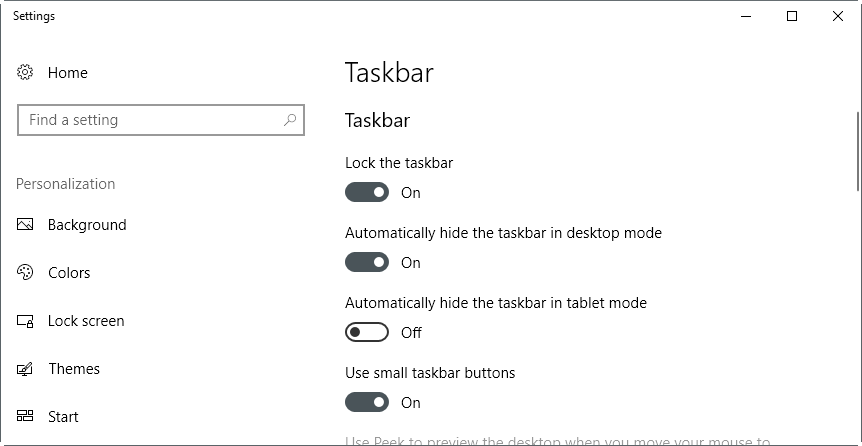
There you find two options that manage the auto-hiding functionality of the Windows 10 taskbar:
- Automatically hide the taskbar in desktop mode.
- Automatically hide the taskbar in tablet mode.
The first applies to all desktop PCs and notebooks, the second only if the device runs in tablet mode.
When enabled, the taskbar is hidden automatically by the operating system. You can bring it up when you move the mouse cursor over the taskbar area.
Windows 10 Taskbar not hiding?

The feature works well most of the time. It can happen however that the taskbar won't hide automatically anymore. You notice this right away, as it does not go away anymore automatically.
The main cause for the taskbar to stay visible -- temporarily -- is if a program or app demands your attention. The program icon may flash in this case to indicate that it wants you to interact with it.
This is the case when certain program operations complete, or when you receive calls, new emails or chat messages.
It is usually enough to click on the program or application icon to confirm that you have taken note of it, and the taskbar should hide again afterwards automatically.
Background apps, those that run in the background for the most part, may also require your attention. This happens mostly when the background application changes its icon, for instance to change the number of new messages.
These issues are resolved easily, but there are situations where the taskbar remains visible even if programs or apps stay silent and don't demand your attention.
Quick Fix
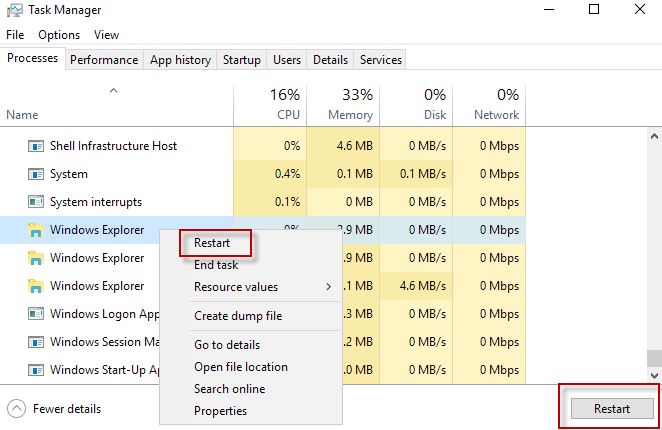
A reliable option when it comes to hiding issues of the Windows 10 taskbar is to restart the Explorer process.
- Use the keyboard shortcut Ctrl-Shift-Esc to open the Windows Task Manager.
- If you see only the basic interface, click on more details.
- Locate the Windows Explorer process under processes, and click on it with the left mouse button.
- Click on the restart button to restart the process.
You may kill and restart Explorer from the command line as well if you prefer that (or want to create a script out of it for even faster access). Thanks Anatoly for the tip.
- Use the keyboard shortcut Windows + R to open the runbox.
- Type cmd.
- Type taskkill /im explorer.exe /f
- Type explorer
- Type exit
Troubleshoot the issue
The first thing you may want to do is try and click anywhere on the desktop (a blank spot there), to see if the taskbar hides automatically when you do. The taskbar may remain visible in some cases until you do something, and clicking anywhere on the desktop is one of the easier things in this case. Also, make sure the mouse cursor is not on the taskbar, as it won't hide in this case either.
Second thing you may want to do if the Windows 10 taskbar is not hiding anymore automatically, is to verify that the preferences are still set to hide the taskbar automatically.
While it seems unlikely that preferences may change on their own, this may happen after Windows upgrades for instance. Before you troubleshoot other possible causes, this is the one thing that you should verify just to make sure.
Digging deeper
Now that you have checked the most common reasons why the Windows 10 taskbar is not hiding, you need to dig deeper if this did not resolve the issue.
I mentioned earlier that application notifications may prevent the taskbar from hiding on the Windows machine. While that is easy to verify for icons that are displayed, it may also be caused by program icons that are hidden (not displayed directly on the taskbar, but hidden behind the little arrow icon)
You may link a particular program to the issue, for instance if you start it regularly, and if the taskbar refuses to hide each time afterwards.
Start by opening the Taskbar preferences again. This is done with the keyboard shortcut Windows-I, and navigating to Personalization > Taskbar in the Settings application.
Locate and click on "select which icons appear on the taskbar" under notification area.
![]()
I recommend that you check the "always show all icons in the notification area". The reason for that is that you get a good overview of all icons, and can identify the culprit easily this way.
Since no icon is hidden anymore, you may spot the application that is causing the taskbar to remain visible with little effort.
![]()
Please note that doing so will display quite a few icons on the taskbar at all times. This is only temporarily though, and you may disable the setting again once you identify the offending application.
![]()
While this may resolve the issue for you, as you can simply click on the icon to get the taskbar to auto-hide again, it can still be an issue if the program prevents the hiding regularly.
One option that you have in this case is to disable notifications for that particular program, if available, or hide the program so that its icon is not displayed in the system tray area anymore.
You may use the Settings page shown above to hide individual icons from appearing on the Windows taskbar.
As far as notifications are concerned, you find some listed under Settings > System > Notifications & actions.
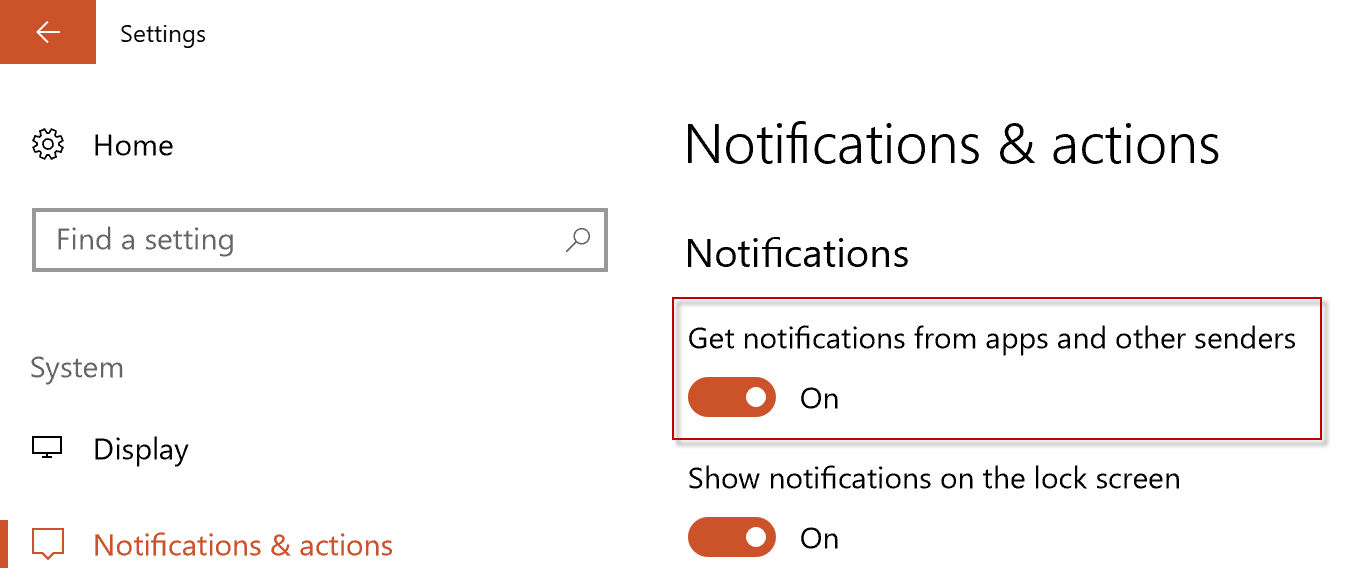
You may turn off "Show app notifications" there for instance to disable most notifications that applications may trigger.
Or, you may check the section for individual programs and applications, to disable notifications for those listed there.
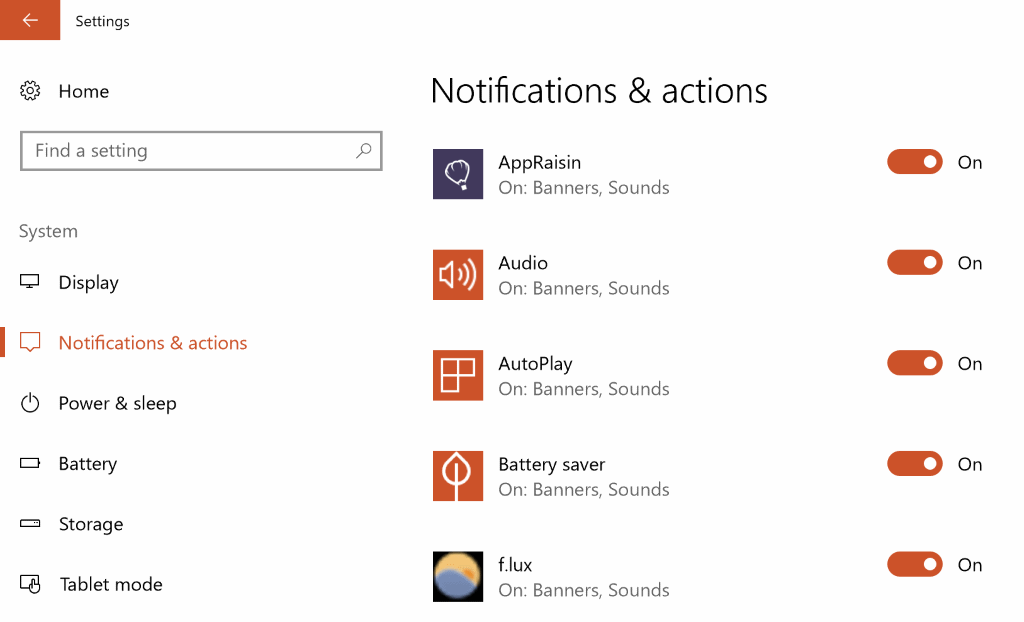
Additional information
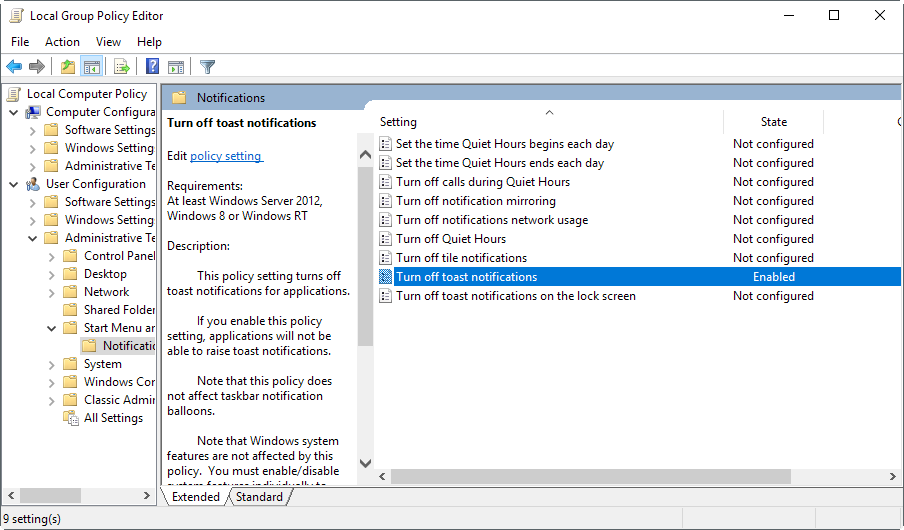
You find several policies in the Group Policy of Windows that you may set to control notifications, or the taskbar.
Tap on the Windows-key, type gpedit.msc and hit the Enter-key. This opens the Group Policy Editor (note that it is only available on Pro or Enterprise editions of Windows 10.
The following policies may be of interest to you:
- User Configuration > Start Menu and Taskbar > Lock all taskbar settings -- This can be useful if you don't want the taskbar settings to change once you have configured them.
- User Configuration > Start Menu and Taskbar > Turn off all balloon notifications - Notifications balloons are not shown if you enable the policy.
- User Configuration > Start Menu and Taskbar > Turn of automatic promotion of notification icons to the taskbar.
- User Configuration > Start Menu and Taskbar > Turn off feature advertisement balloon notifications.
- User Configuration > Start Menu and Taskbar > Notifications > turn off calls during Quiet Hours
- User Configuration > Start Menu and Taskbar > Notifications > Turn off toast notifications
Troubleshooting Video
Software
The Windows Club released a free program for Windows 10, 8 and 7 that hides the taskbar using a hotkey. What's particularly interesting about it is that it hides the taskbar, but not the start button.
You can download the program from the official website. The shortcut is Ctrl-Esc to toggle the taskbar's visibility.
Now You: do you display or hide the taskbar on Windows?
This article was first seen on ComTek's "TekBits" Technology News

- Log in to post comments